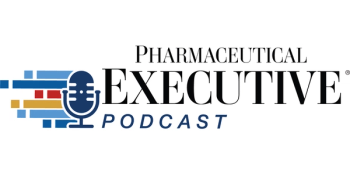
The Influence of PD-1 Inhibitor Label Restrictions on Future Studies
Ron Lanton, Partner, Lanton Law, discusses ways that the recent FDA PD-1 inhibitor label restrictions could influence future drug development strategies.
PE: How might this labeling challenge influence future drug development strategies, especially in terms of targeting specific cancer subtypes or biomarkers in gastric cancers?
Lanton: I think it’s going to slow down R&D altogether, that’s the first thing. I think these restrictions that were noted by scores that were cut off below a 10. I think Merck says something about that's going to exclude about 65% of new patients with HER2-negative stomach cancer. Additionally, this is going to also make it so that the drug is more expensive than it already is, and that's definitely going to affect future access to insurance formularies that are going to restrict access. I know we've talked before about DVMs and how they view price and how all that comes, to how they think about things and what they put on their formulary. So, this is definitely going to be an external factor to that.
Full Interview Summary: The FDA’s recent challenges to the broad labeling of PD-1 inhibitors for gastric cancers, particularly around PD-L1 expression, could have far-reaching legal, regulatory, and strategic implications for pharmaceutical companies and healthcare providers. This shift could significantly restrict patient access to these treatments by mandating a threshold for PD-L1 expression, which is anticipated to exclude a large portion of patients, particularly those with low PD-L1 expression levels. These patients, lacking alternative treatment options, may initiate litigation, claiming denial of necessary treatment.
From a regulatory standpoint, companies will need to revise labeling to specify PD-L1 thresholds, impacting compliance procedures and possibly requiring additional studies. This narrowing of indications is also likely to increase the cost of these therapies, potentially limiting their inclusion in insurance formularies and intensifying market access challenges. Consequently, insurers might also face legal scrutiny from patients and providers who feel that access is unfairly limited due to the new labeling standards. Moreover, product liability claims could arise if adverse events occur under a broader indication, adding further risk.
Pharmaceutical companies may argue that biomarkers can restrict access, which could touch on genetic discrimination concerns, though the Genetic Information Nondiscrimination Act (GINA) may limit this defense’s applicability. This labeling challenge could also impact future drug development strategies, as companies may become more cautious about targeting treatments based on specific biomarkers. The FDA’s stance may deter innovation by slowing research and development (R&D) timelines, as companies may hesitate to invest in drugs with narrow patient populations. This situation may also rekindle debate around Right to Try laws, which aim to broaden treatment access for critically ill patients. Overall, the FDA’s challenge is poised to reshape market dynamics and legal risks, creating a complex landscape for manufacturers and healthcare providers alike.
Newsletter
Lead with insight with the Pharmaceutical Executive newsletter, featuring strategic analysis, leadership trends, and market intelligence for biopharma decision-makers.




